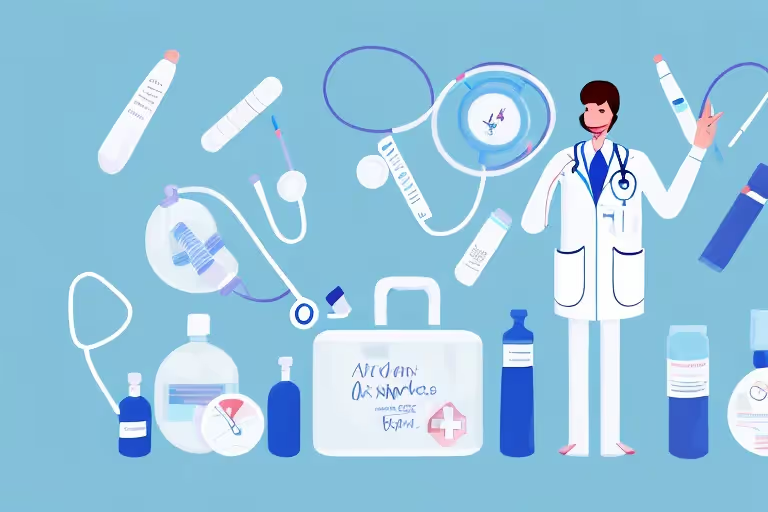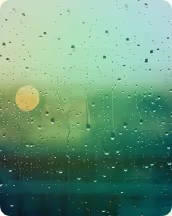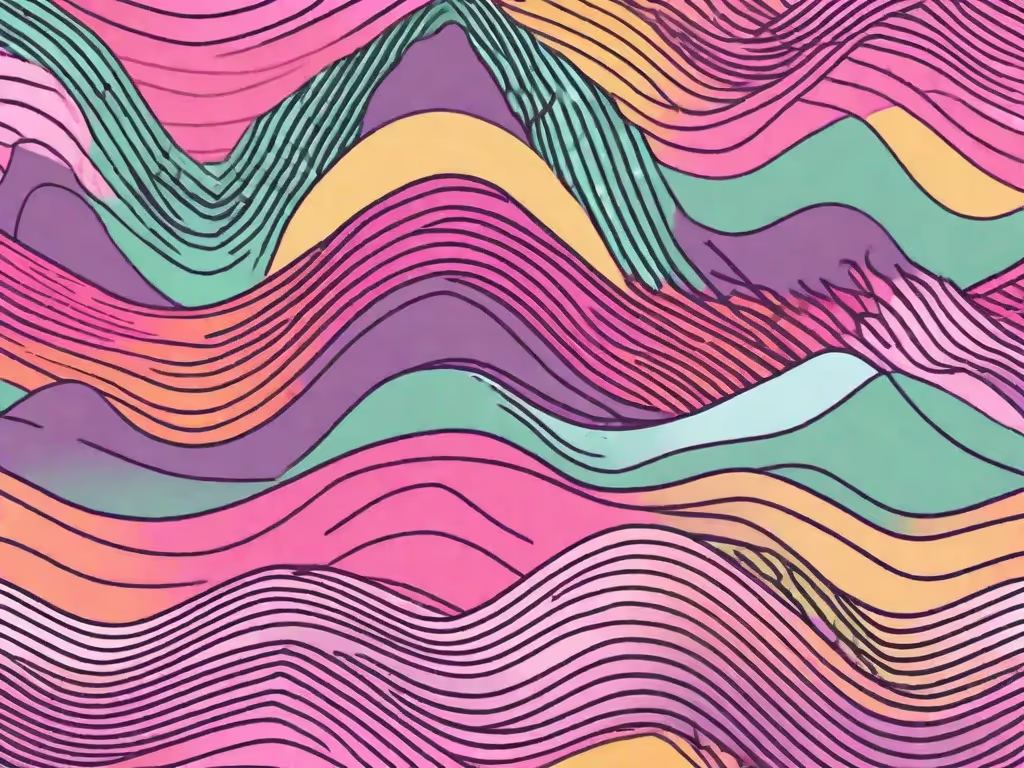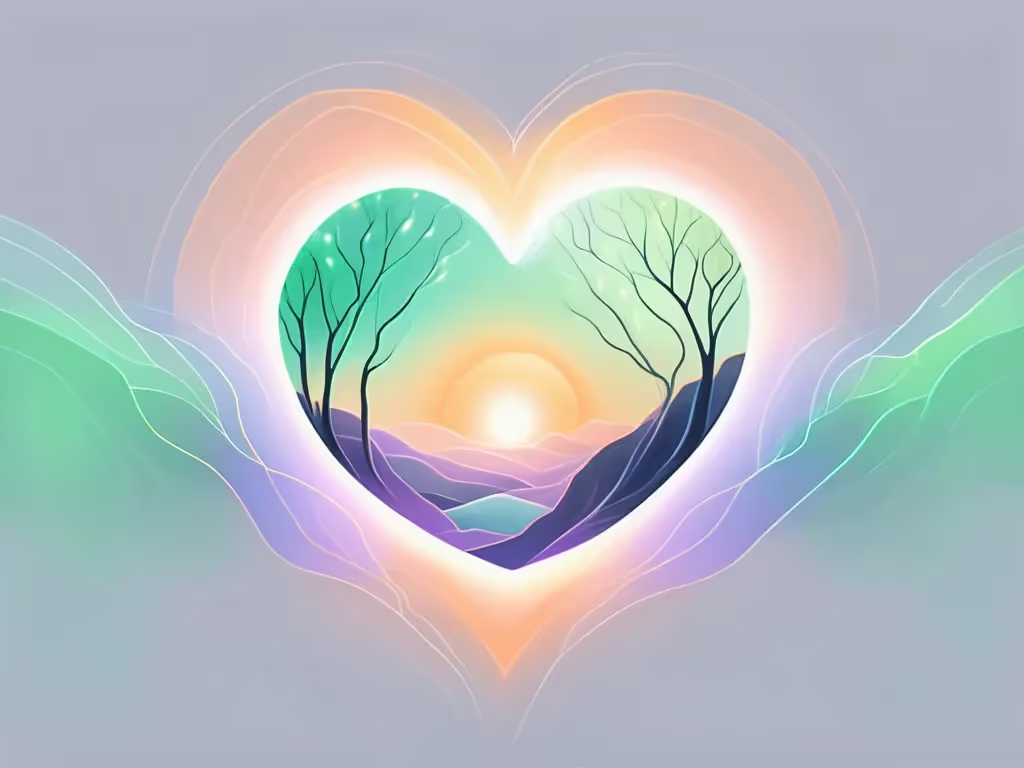Anxiety is a complex emotion that affects not only our mental well-being but also our physical health. One surprising manifestation of anxiety is the development of a rash on the skin, commonly known as anxiety rash. This article aims to provide a comprehensive understanding of anxiety rash by exploring its causes, symptoms, and treatment options.
What is Anxiety Rash?
Defining anxiety rash is the first step towards understanding this unique reaction. Anxiety rash, also known as stress rash or nervous rash, refers to a skin condition triggered by heightened levels of anxiety and stress. It often appears as a red, itchy rash on various parts of the body, including the face, neck, chest, and arms.
When anxiety levels rise, the body's stress response is activated, releasing a surge of hormones and chemicals. This physiological reaction can have various effects on the body, including the skin. For some individuals, anxiety manifests as a rash, serving as a visible reminder of the internal turmoil they are experiencing.
Defining Anxiety Rash
Anxiety rash typically manifests as raised, itchy, and red patches on the skin. It may vary in size and shape, ranging from small spots to larger clusters. Often, the rash is accompanied by a sensation of burning or stinging, further intensifying the discomfort associated with anxiety.
These rashes can appear suddenly or develop gradually, depending on the individual's stress levels and their body's response to anxiety. The areas most commonly affected by anxiety rash include the face, neck, chest, and arms, but it can also appear on other parts of the body.
While anxiety rash is not a life-threatening condition, it can be distressing and impact an individual's quality of life. The visible nature of the rash may lead to self-consciousness and increased anxiety, creating a cycle that perpetuates the skin condition.
Common Misconceptions about Anxiety Rash
Despite its prevalence, anxiety rash is often misunderstood. Some may mistakenly attribute the rash to an allergic reaction or a contagious skin condition. However, it is important to recognize that anxiety rash is an external manifestation of internal emotional distress, rather than a separate medical condition.
It is crucial to differentiate anxiety rash from other skin conditions to ensure appropriate treatment and support. While allergies and skin infections can also cause rashes, anxiety rash is specifically linked to emotional stress and anxiety. Addressing the underlying psychological factors is essential in managing and alleviating anxiety rash.
Furthermore, it is important to note that anxiety rash is not contagious. It cannot be transmitted from one person to another through physical contact. This misconception often leads to unnecessary fear and social isolation for individuals experiencing anxiety rash.
By understanding the true nature of anxiety rash and dispelling misconceptions, we can create a more supportive and empathetic environment for those dealing with this skin condition. It is crucial to approach anxiety rash with compassion and seek appropriate professional help to address both the emotional and physical aspects of this condition.
The Connection Between Anxiety and Skin
Understanding how anxiety affects the skin is crucial in grasping the underlying mechanisms of anxiety rash. The skin is a reflection of our overall well-being, and anxiety can disrupt its delicate balance in several ways.
When we experience anxiety, our body's stress response is activated, leading to the release of stress hormones like cortisol. These hormones can compromise the skin's natural protective barrier, leaving it vulnerable to various issues. Increased sensitivity, dryness, and a weakened ability to heal are common consequences of anxiety on the skin.
Moreover, anxiety can also have a significant impact on the immune system's functioning. When we are anxious, the immune system may not work as efficiently as it should, making the skin more susceptible to infections and inflammation. This can manifest as redness, swelling, and even painful rashes.
Stress and Skin: A Complex Relationship
The relationship between stress and the skin is a complex one. Anxiety can worsen existing skin conditions such as eczema, psoriasis, and acne. The constant state of stress can trigger flare-ups, causing these conditions to become more severe and difficult to manage. The physical discomfort and visible presence of these skin issues can further fuel feelings of stress and self-consciousness, creating a distressing cycle.
It is important to note that anxiety rash, also known as stress rash or stress hives, can appear as an immediate response to a stressful event or as a chronic condition triggered by ongoing anxiety. The rash typically presents as itchy, red welts on the skin and can occur anywhere on the body.
Managing anxiety and its impact on the skin requires a comprehensive approach. Engaging in stress-reducing activities such as exercise, meditation, and deep breathing exercises can help regulate the body's stress response and promote healthier skin. Additionally, practicing good skincare habits, such as using gentle cleansers and moisturizers, can aid in maintaining the skin's natural barrier function.
Seeking professional help is also crucial for individuals experiencing severe anxiety and its effects on the skin. Dermatologists and mental health professionals can work together to develop a personalized treatment plan that addresses both the skin issues and the underlying anxiety.
By understanding the intricate connection between anxiety and the skin, we can better appreciate the importance of managing stress and prioritizing self-care. Taking steps to reduce anxiety not only benefits our mental well-being but also promotes healthier, more radiant skin.
Causes of Anxiety Rash
There are various psychological and physical triggers that can lead to the development of anxiety rash. By identifying and addressing these triggers, it becomes possible to manage and prevent anxiety rash more effectively.
Psychological Triggers
Psychological triggers for anxiety rash include acute or chronic stress, anxiety disorders, phobias, and traumatic experiences. These triggers can induce a heightened state of emotional distress, directly impacting the well-being of the skin.
Acute or chronic stress is a common psychological trigger for anxiety rash. When individuals experience a high level of stress, their body releases stress hormones, such as cortisol, which can affect the immune system and lead to skin reactions. Additionally, anxiety disorders, such as generalized anxiety disorder or panic disorder, can cause excessive worry and fear, which can manifest as a rash on the skin.
Phobias, which are intense and irrational fears of specific objects or situations, can also contribute to the development of anxiety rash. When exposed to the object or situation that triggers their phobia, individuals may experience a surge of anxiety that can manifest as a rash.
Traumatic experiences, such as physical or emotional abuse, can have a lasting impact on a person's mental and physical well-being. These experiences can lead to the development of anxiety disorders and, subsequently, anxiety rash. The body's response to trauma can disrupt the normal functioning of the immune system, making the skin more susceptible to rashes and other dermatological conditions.
Physical Triggers
In addition to psychological triggers, physical factors can also contribute to the development of anxiety rash. These may include exposure to allergens, sudden changes in temperature or humidity, certain medications, and even posture-related stress. Therefore, it is crucial to consider both emotional and physical factors when addressing anxiety rash.
Exposure to allergens, such as certain foods, pet dander, or pollen, can trigger an allergic reaction in some individuals. This allergic reaction may manifest as a rash on the skin, especially in people who are prone to anxiety. Sudden changes in temperature or humidity can also affect the skin's barrier function, leading to dryness, irritation, and the development of a rash.
Some medications, such as antibiotics or anticonvulsants, can have side effects that include skin rashes. In individuals who are already prone to anxiety, these medication-induced rashes may be more likely to occur. Additionally, poor posture or prolonged periods of stress can lead to muscle tension and discomfort, which may indirectly contribute to the development of anxiety rash.
It is important to note that anxiety rash can vary in severity and appearance. Some individuals may experience a mild rash that resolves on its own, while others may develop a more persistent and severe rash that requires medical intervention. If you are concerned about anxiety rash or its impact on your well-being, it is recommended to consult with a healthcare professional for proper evaluation and guidance.
Recognizing the Symptoms of Anxiety Rash
Identifying the symptoms associated with anxiety rash is essential for early detection and intervention. By paying attention to these signs, individuals can take proactive steps towards managing their anxiety and addressing any underlying concerns.
Physical Symptoms
Common physical symptoms of anxiety rash include redness, itchiness, swelling, and the presence of raised bumps or hives. Some individuals may also experience a sensation of warmth or tenderness in the affected areas.
Emotional Symptoms
Emotional symptoms associated with anxiety rash often mirror those of anxiety itself. These include feelings of restlessness, irritability, difficulty concentrating, and a heightened sense of worry or fear. By recognizing these emotional symptoms, individuals can gain insight into the connection between their anxious thoughts and the physical manifestation of anxiety rash.
How is Anxiety Rash Diagnosed?
Diagnosing anxiety rash involves a comprehensive evaluation that combines medical examination and psychological assessment. By adopting a holistic approach, healthcare professionals can gain a thorough understanding of the individual's physical and emotional well-being.
Medical Examination
A medical examination may involve a thorough assessment of the skin, including a visual examination of the rash and any associated symptoms. Additionally, healthcare professionals may inquire about the individual's medical history, medications, and lifestyle factors to gain further insight into potential triggers or underlying conditions.
Psychological Evaluation
A psychological evaluation will focus on understanding the individual's emotional well-being, including any anxiety or stress-related conditions. By discussing the individual's thoughts, emotions, and experiences, healthcare professionals can identify any underlying factors contributing to anxiety rash and facilitate appropriate treatment strategies.
In conclusion, anxiety rash serves as a visible reminder of the intricate connection between our emotional and physical well-being. By gaining a deeper understanding of anxiety rash, its causes, symptoms, and treatment options, individuals can take proactive steps towards managing their anxiety and improving their overall quality of life.
If you're seeking support in managing your anxiety and improving your mental well-being, consider exploring the benefits of the Aura Health App. With its user-friendly interface and wide range of mindfulness and meditation exercises, Aura provides a convenient avenue for individuals to prioritize their mental health and unlock a sense of inner calm. Start your journey towards well-being today!
Aura is Your All In One App for Meditation, Mindfulness Wellbeing
Find peace every day with one app for your whole well-being. There is no one-size-fits-all solution to mental well-being. Aura is the first all-in-one wellness app that learns how to best help you. Discover an endless library of expert-created tracks for your well-being, all taught by the world’s best coaches, therapists, and storytellers. With Aura's personalized recommendations, you can find peace every morning, day and night.



.webp)






.avif)

%20(1).avif)


.avif)
.avif)
.webp)


.avif)


















































































































.avif)

















.svg)









